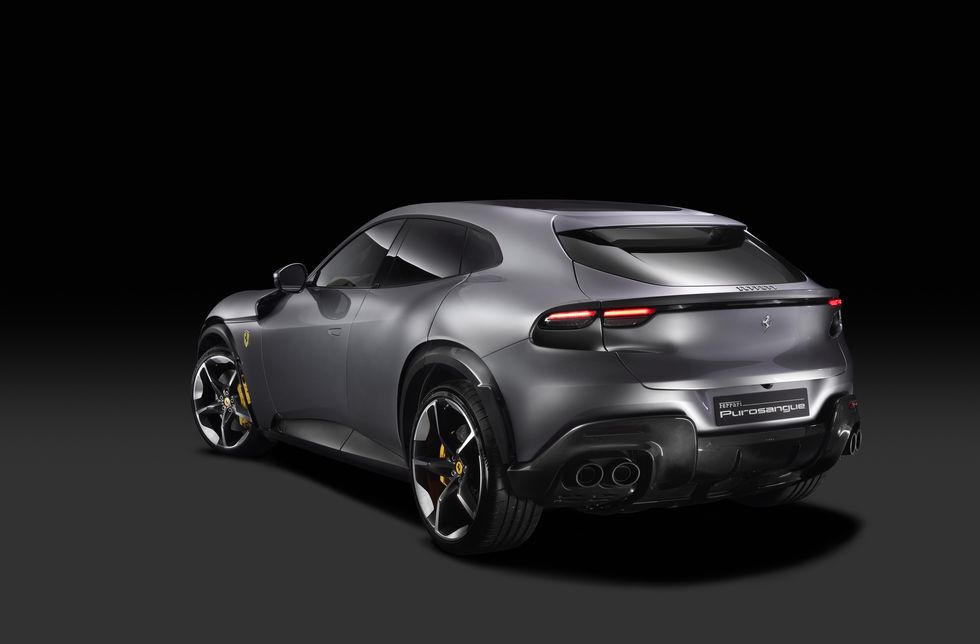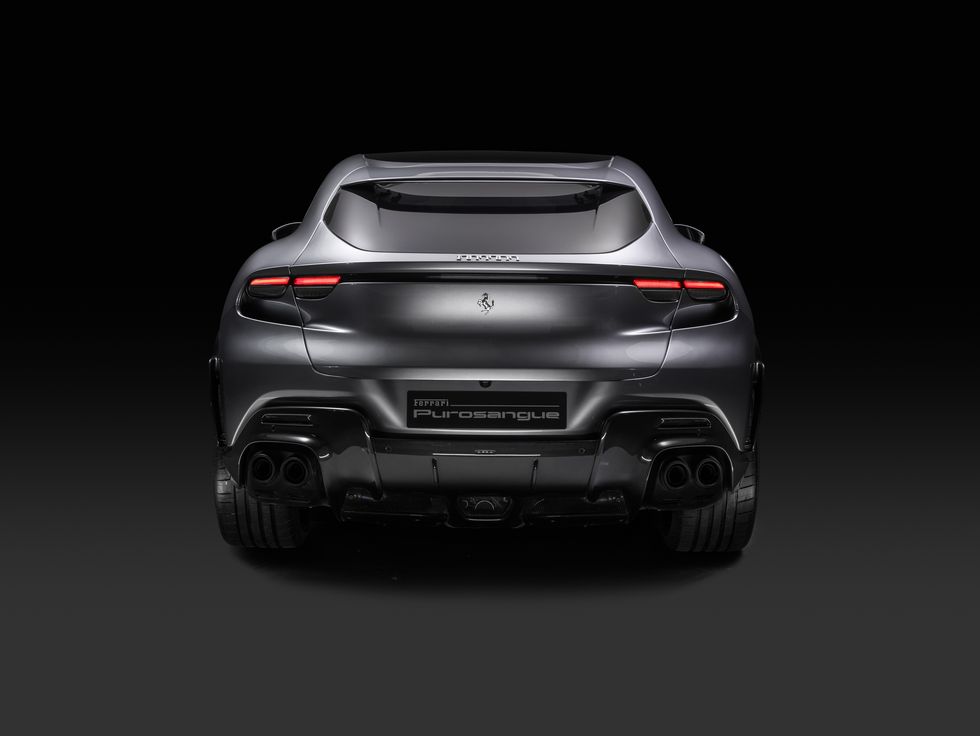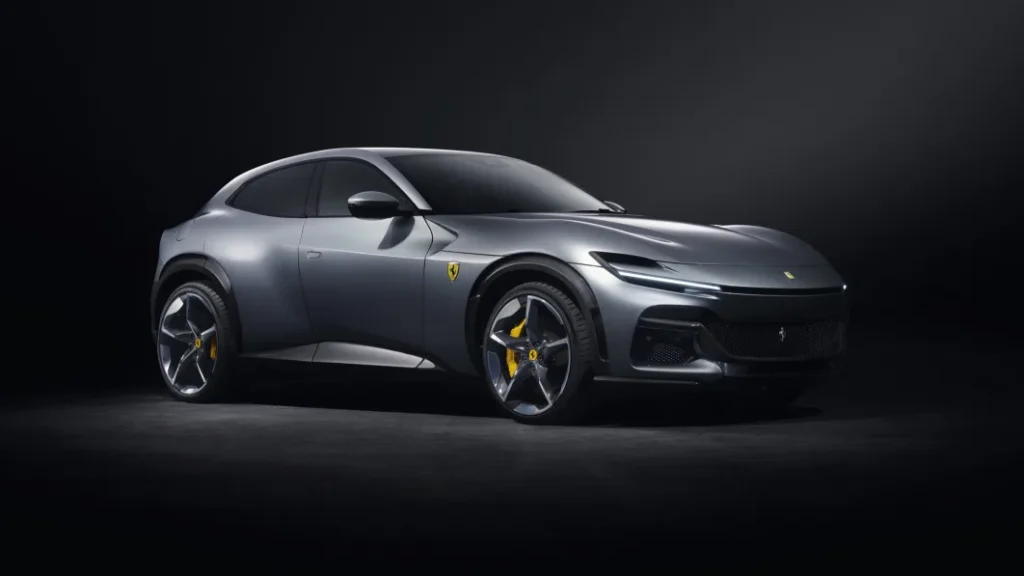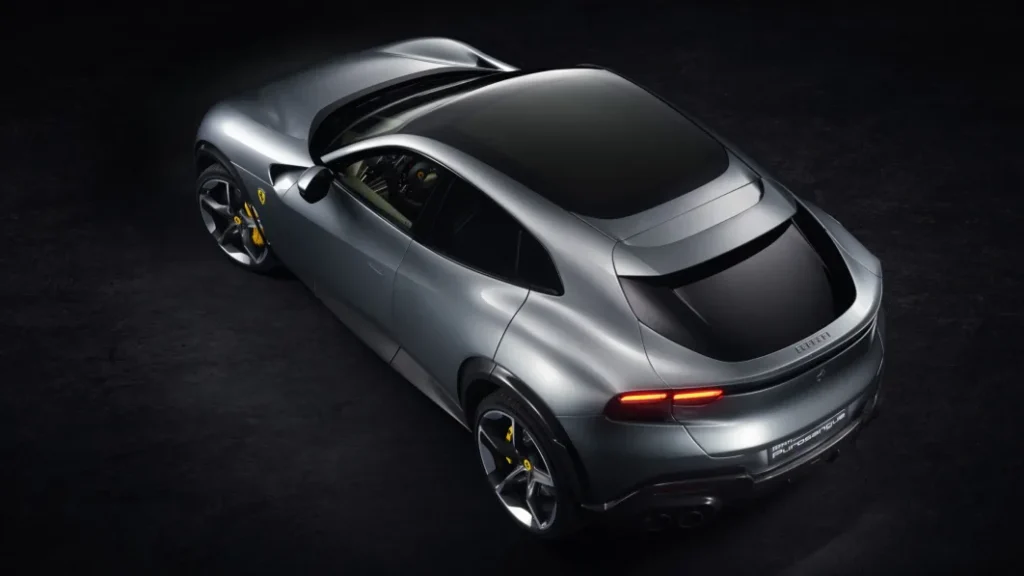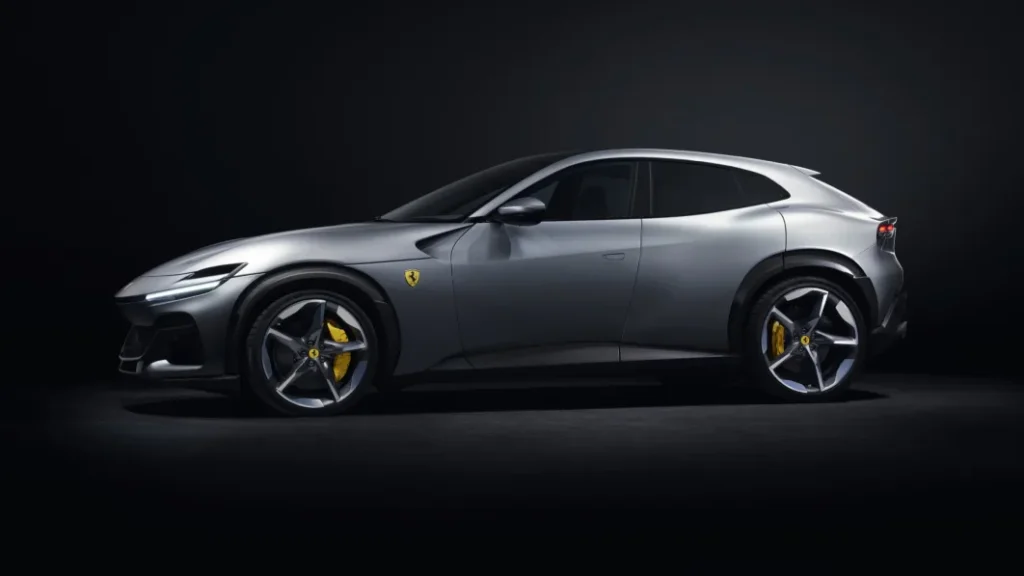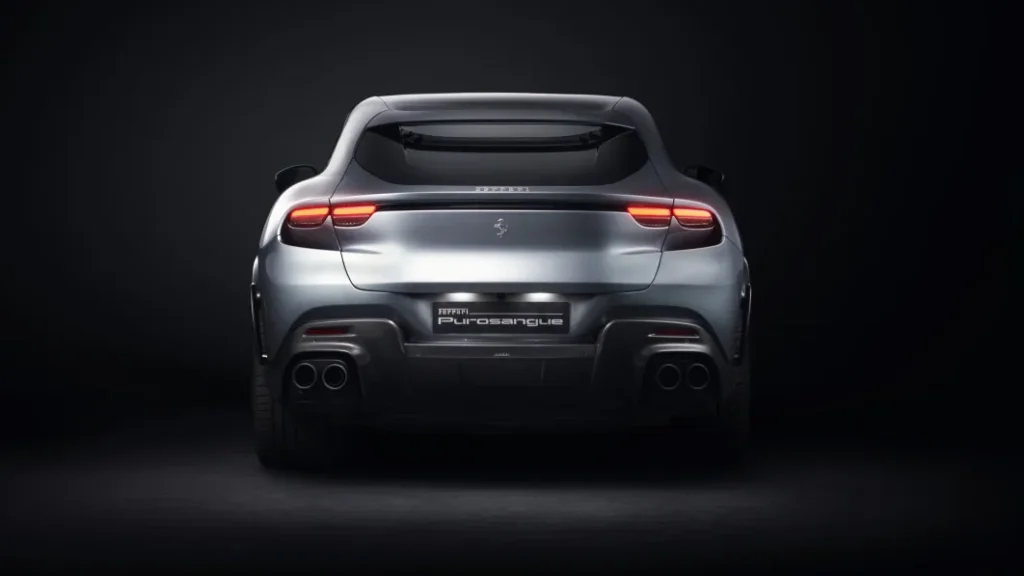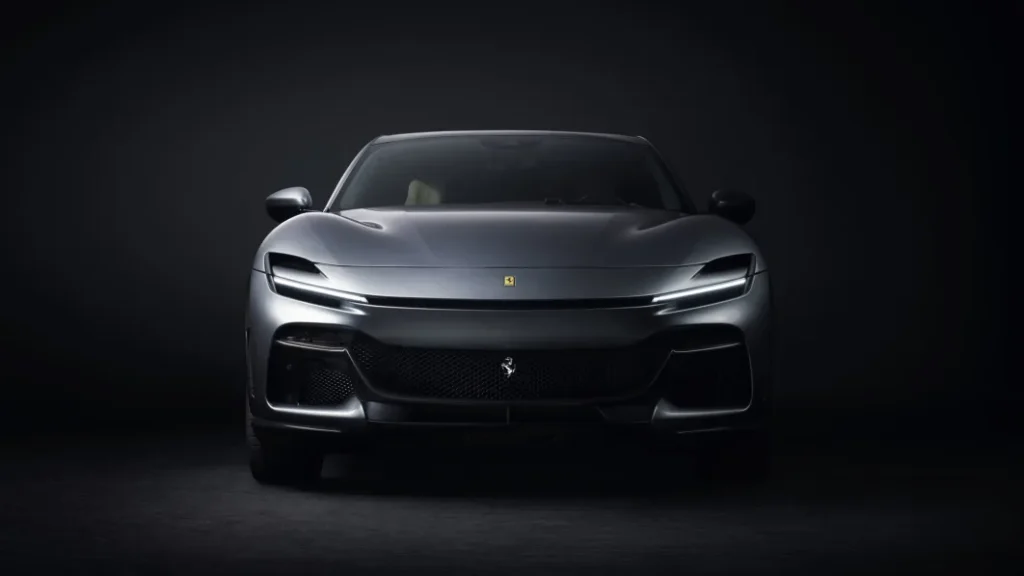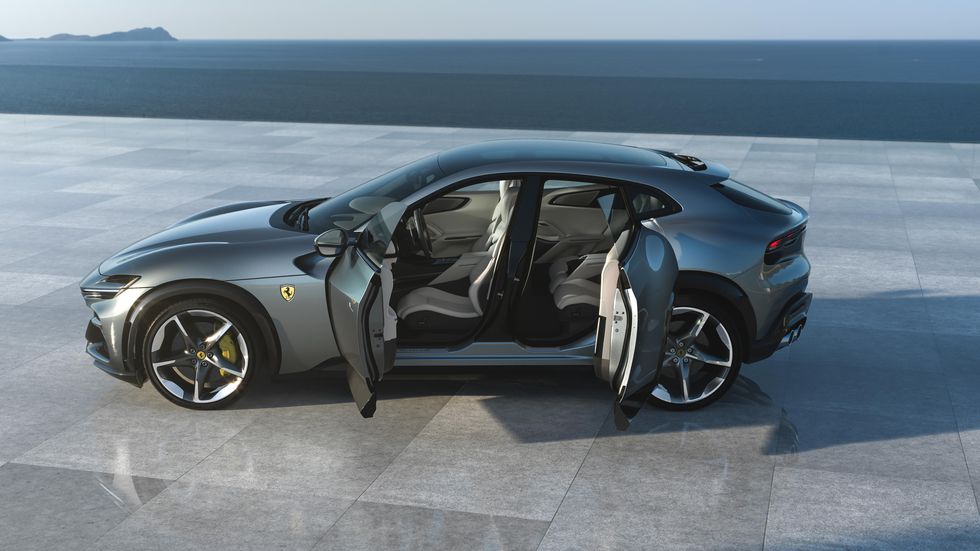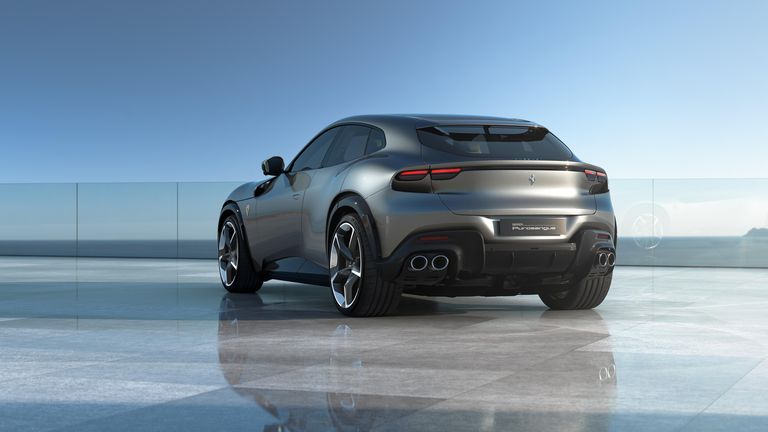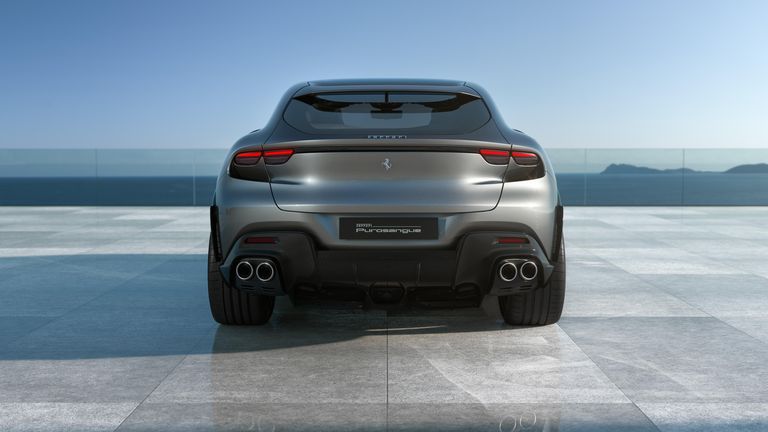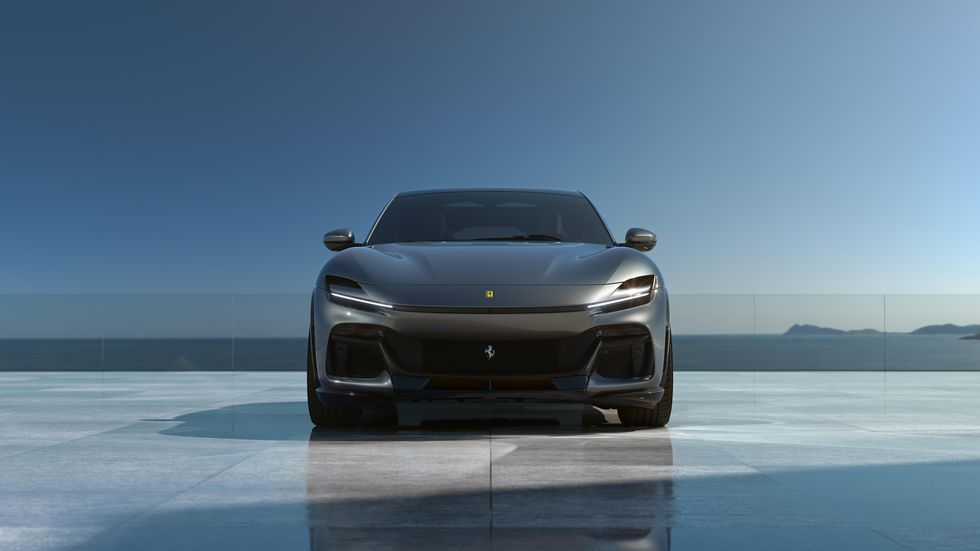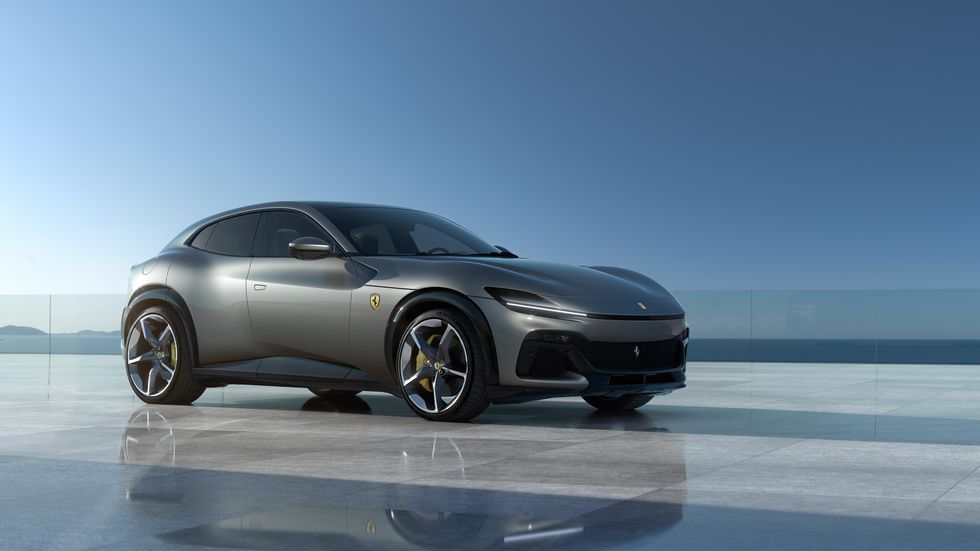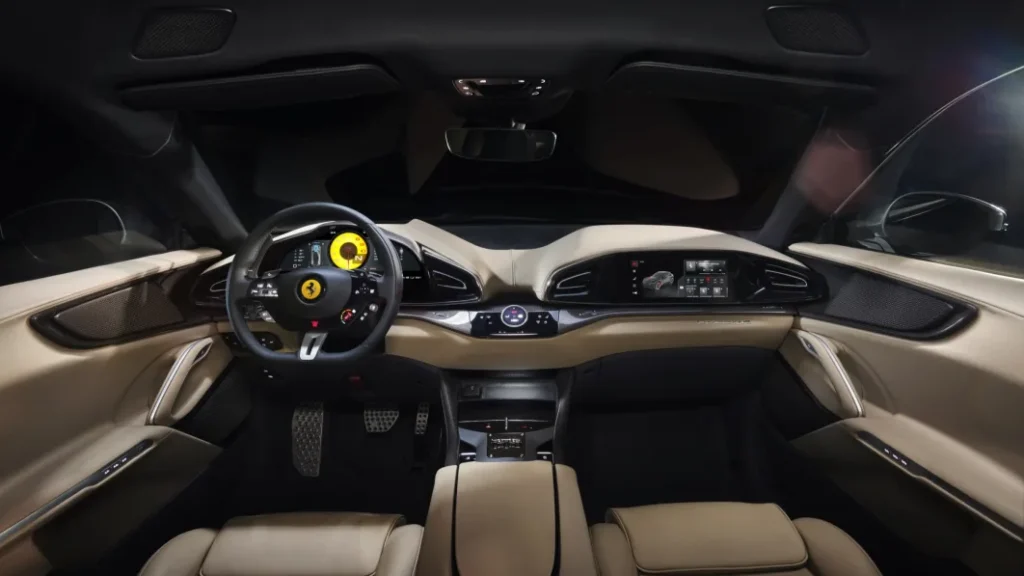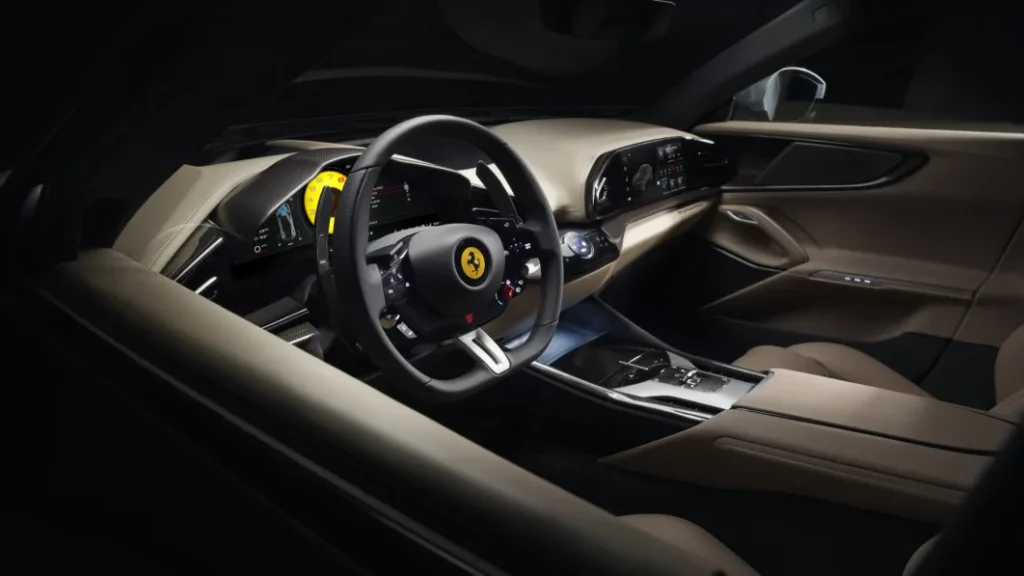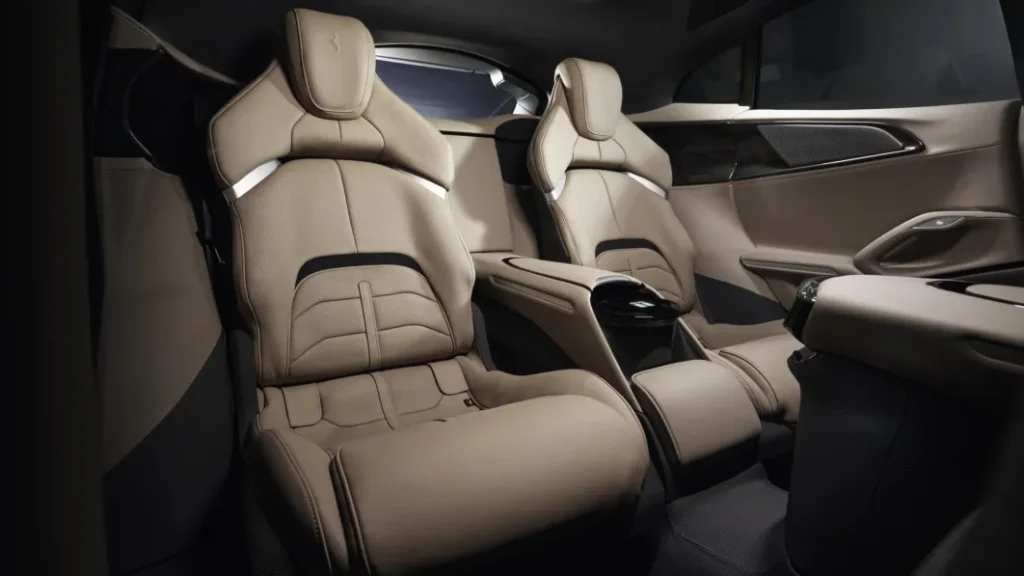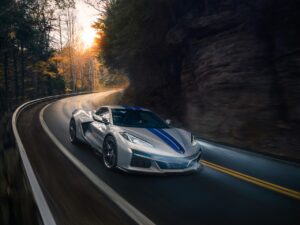For the first time in Ferrari’s history, they reveal something with the same number of doors as wheels
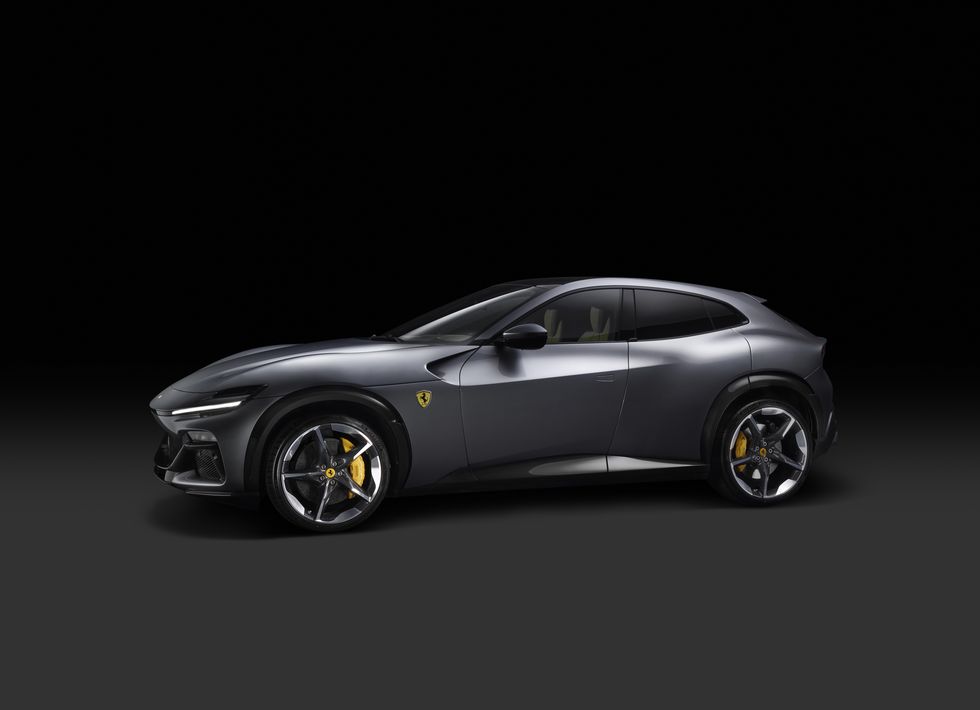
The Italians have always played an integral part in history. Whether it be before the term “Italy” was ever used with the Romans or even the Axis powers fronted by Bernandino Mussolini. Regardless of their defeat in WWII (bald eagle screeches in the background), there’s one thing that they’ve never seemed to lose at: Cars. The new Ferrari Purosangue is no different- it’s a winner.
Bred by the same company who put out icons like the LaFerrari and the Enzo now have put out… a 4 door family hauler? After checking my notes, this seems to be right. However Ferrari calls it anything but an SUV, in fact they refer to the Purosangue as a FUV. Err, okay? Make no mistake, underneath that boring, soccer mom, Caprisun hauling label is still a Ferrari. This is a vehicle from the same people who created the masterpiece we call the 488 Pista.
Surrounded by increasing competition from competitors high performance SUVs like the Aston Martin DBX 707, the Porsche Cayenne Turbo GT, and the Lamborghini Urus, Ferrari felt pressured to put out a family hauler of their own. Left out of today’s vast market share of family vehicles, the Purosangue is a tad bit late to the party as the Lamborghini Urus has been out since 2018, the Audi RSQ8 since 2018 and the DBX debuting 2 years ago in 2020. Ferrari has not been eyeing the super SUV sector though, their skunkworks team has been hiding this behind closed doors for years, licking their chops at what could be one of the company’s most lucrative offerings yet.
Purosangue Means Pureblood
While Lamborghini and Aston Martin may have beat Ferrari to the punch, what they lack is a gigantic fire-breathing monstrosity of an engine. Stuffed under the hood is 6.5 L V-12 putting out 715 prancing horses. In Italian, Purosangue translates literally to pureblood, and in essence that’s what this is. Ferrari will always refuse to see the Purosangue as a true SUV, instead opting to visualize it in their eyes as a mere extension of their supercar lineup. After all, what SUV would ever come with 12 cylinders under its hood? In true high-revving Ferrari fashion the Purosangue’s tachometer taps out at 8,250 rpm, making it the highest revving SUV ever built. Don’t tell Ferrari I said that. The claim to fame is brought into light by the motor itself which takes heavy cues from Ferrari’s other naturally aspirated V-12, the 812 Competizone.
Ferrari states that the cylinder heads come directly from the 812, but everything else was built independently with the same architecture and structure as its current V-12 that has been used. The development of the power source was meant to integrate F1 style concepts into the engine to innovate and create the best possible engine for the Purosangue.
The 715 horsepower tops the Aston Martin DBX 707 by 7 horsepower and succumbs the perennial leader in the group, the Lamborghini Urus by 68 horsepower despite the introduction of the Urus Performante which received a horsepower boost from 641 to 657. The Purosangue’s engine is paired to Ferrari’s 8-speed DCT allowing for lightning quick shifts similar to the likes of the SF90 Stradale. The Purosangue will feature an AWD setup with rear wheel steering standard, an evolution of the setup that was used on the Ferrari FF and then the GTC4 Lusso. We’re starting to see a trend here, it’s a best hit montage of all the best the prancing horse has to offer. “Ferrari 2020 Jam: The Best Hits”.
“It’s Not a SUV, it’s a Ferrari”
That’s the plea from Ferrari as they try to convince consumers that the Purosangue is a super car in hatchback form. Well it sure looks like an SUV to me. Whatever it identifies as it’s sure as hell a Ferrari. The company states that it will do 0-62 mph in 3.3 seconds, a figure which took us back first, ranking it at the top of the SUVs which we’ve tested. Topping out at around 193 mph, the Purosangue is the number one fastest SUV on the market tying the DBX 707 for its throne. Still, however, SUVs seem to fall just short of that elusive 200 mph.
What’s peculiar is the unorthodox way that the AWD and 8-speed DCT work. The DCT will only use the first 4 gears up to 124 mph, after which the Purosangue will turn into a RWD biased vehicle. This allows the Purosangue to master a really solid launch from a dig but be more skillful on a track where a rear wheel bias is more beneficial. Also tacked on are the rest of Ferrari’s bundle of track tools including ABS programming, and Side Slip Control included on all other Ferraris.
Ferrari’s claim to fame is the bones of the car. In order to make such a quite simply put- bulky and tall vehicle handle like a sports car is no easy task. The Italian company worked from the ground up to create a unique and all-new structure for the Purosangue. Unlike the engine which had its bits and pieces derived from other vehicles, this is fresh off the boat.
We must ask you: what does a Chevy Colorado and a Ferrari have in common? They use the same dampers. Multimatic supplies the dampers for the Colorado ZR2, the Camaro, and now the Purosangue. Pair that with the new high-strength aluminum alloy used for the tub and the lower body structure and you have a vehicle that grips to the ground and might make our list of “Super Handlers”. A dry sump system allows the car to sit even lower, even on the 22 and 23 inch wheels that the body perches on. Wrapped on those is a staggered 255 and 315 mm setup in the front and rear respectively.
The roof is full carbon fiber, defeating yet another hurdle that the Ferrari team had to overcome in terms of making a true performance SUV. The omission of a regular roof made with aluminum body panels cuts weight by 20%. Ground clearance sits at 7.2 inches and can shrink .4 inches during hard turns but is a pretty fixed number barring any kind of suspension kit (Ferrari headquarters just took a deep breath and is writing the cease-and-desist letter now). This drives home the point that in Ferrari’s eyes, this is a super car, just a tad more practical.
4 Doors, 4 Seats
Ferrari has had a past of making 2+2 cars, that is vehicles with 4 seats. They would never be as to make something as gauche as a 5-seater. But this is their first vehicle with 4 doors. Uh oh Ferrari perfectionists. The design is quite interesting, it follows Ferrari’s new design mantra of flowy modern lines with deep sharp angles. We see 296 GTB in the front and Roma in the rear. You can flip those around too; we see the same both ways.
We talked about the 2+2 design, but this time, the Purosangue will come with all 4 seats as bucket seats. Ferrari stated that even in a vehicle that is higher up off the ground, they still want driving the car to emulate the low-slung driving position that Ferraris are known for. The omission of the center seat in the rear is also a testament to how Ferrari wants this car to seem, performance oriented. The 7.2-inch ground clearance is meant for all but off-roading, something that differs from other sports utes in the segment where promotional media purports them as doing something utilitarian.
10 years ago, if we told you that Ferrari would come out with a 4-door car, you would have slapped us across the face and said, “this publication is a joke”, 1.) you’d be correct on the latter, 2.) you’d be wrong on the former. While the Purosangue has 4 doors, Ferrari goes about it in a unique way. Suicide doors of course. Rear hinged rear doors rival that of the Rolls-Royce Cullinan and is one of many clever ideas that Ferrari implemented to keep the Purosangue compact and made sure it didn’t get too bulky for itself.
Italian, Inside and Out
While the exterior is enamored with flowy lines and curves that resemble even the most vicarious Italian model, the soft edges eventually give way to what we think is the best interior we’ve seen on a Ferrari yet. Ferrari states that the cabin was inspired by the SF90 Stradale with the reappearance of the passenger screen. Measuring 10.2 inches, the cabin looks mirrored on each side, sans the steering wheel of course. The seats? Of course, Alcantara with leather thrown in… did you forget that this was a Ferrari?
The outside is what is draws you in though, as we mentioned before, it takes its styling cues from other Ferraris. The front and rear fascia resemble the 296 GTB and the Ferrari Roma. The headlights are placed in a somewhat unusual spot, lower on the front bumper. This was to make room for two air intakes that flank the front grille, allowing for better airflow and cooling optimization aimed at the engine. Ferrari brass also was keen on putting the Purosangue through the wind tunnel, which stated that the main purpose of the aerodynamic design was not to up downforce but rather lower the drag coefficient. The development team even went so far as to nix the rear wiper from the back windshield in the name of aerodynamics. The front hood features what Ferrari calls an aerobridge, taken from the F12 Berlinettta. The bridge serves as yet another aerodynamic took in order to reduce drag.
Final Thoughts
Ferrari purists may cringe at the thought of a new Ferrari, a SUV at that, but we beg to differ. Handsomely styled, carefully thought out, and the premise of a stringent testing process that makes the Purosangue stay true to the brand make the idea of a bulky Ferrari not so bad. While bigger is not always better, it is undeniably unique. The way we see it, the Purosangue has its vast number of differences with the other vehicles in the segment, yet it still falls into that segment. No matter what you categorize it as, it’s distinctly Ferrari.
We’ve learned that the starting sticker price of the Purosangue will be around the $400,000 mark before options. But even if you have that cash in your trust fund, hold up. First dibs were called ages ago by prioritized Ferrari customers and these days, good luck trying to find one without a dealer markup. That is, if you’re already buddy buddy with the company. Ferrari estimates that 20% of their sales will be from the Purosangue and no more. Interesting approach, but we see it. Now, what’s next… a Ferrari pickup truck?


